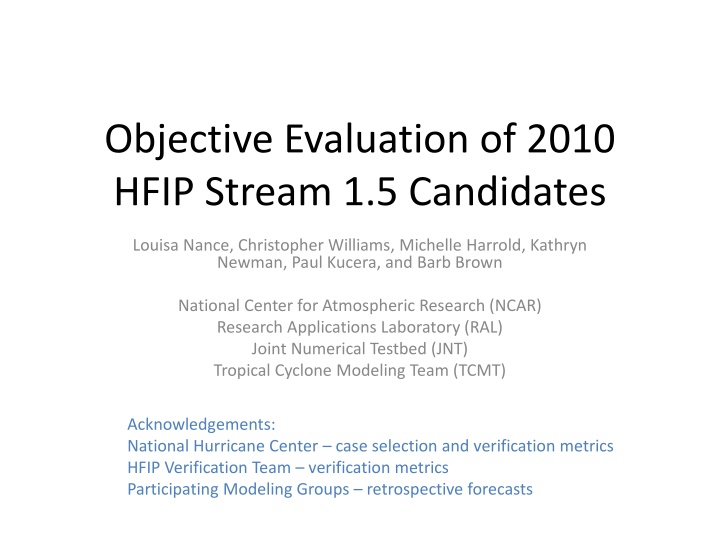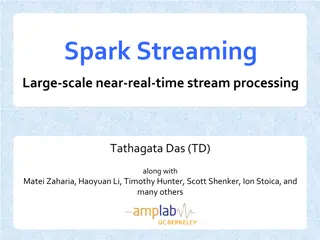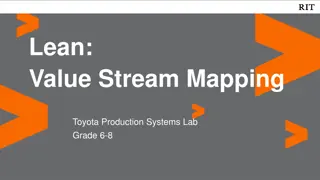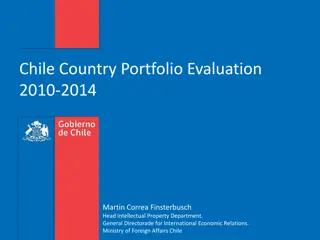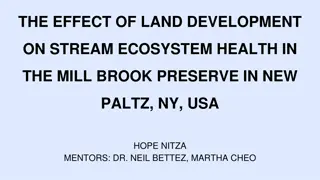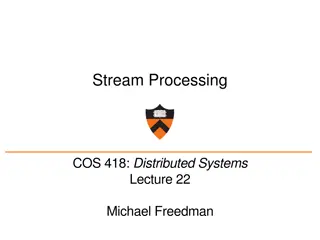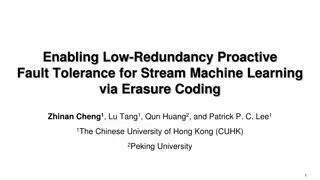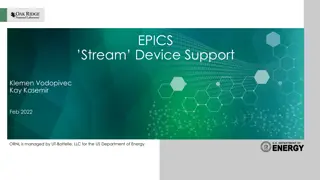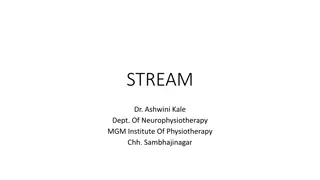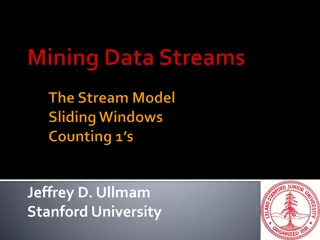Evaluation of 2010 HFIP Stream 1.5 Candidates
The objective evaluation of 2010 HFIP Stream 1.5 candidates Louisa Nance, Christopher Williams, Michelle Harrold, Kathryn Newman, Paul Kucera, and Barb Brown by the National Center for Atmospheric Research (NCAR) presents a detailed analysis of the participants, retrospective cases, methodology, and baseline comparisons in enhancing numerical weather prediction capabilities for tropical cyclones.
Download Presentation

Please find below an Image/Link to download the presentation.
The content on the website is provided AS IS for your information and personal use only. It may not be sold, licensed, or shared on other websites without obtaining consent from the author.If you encounter any issues during the download, it is possible that the publisher has removed the file from their server.
You are allowed to download the files provided on this website for personal or commercial use, subject to the condition that they are used lawfully. All files are the property of their respective owners.
The content on the website is provided AS IS for your information and personal use only. It may not be sold, licensed, or shared on other websites without obtaining consent from the author.
E N D
Presentation Transcript
Objective Evaluation of 2010 HFIP Stream 1.5 Candidates Louisa Nance, Christopher Williams, Michelle Harrold, Kathryn Newman, Paul Kucera, and Barb Brown National Center for Atmospheric Research (NCAR) Research Applications Laboratory (RAL) Joint Numerical Testbed (JNT) Tropical Cyclone Modeling Team (TCMT) Acknowledgements: National Hurricane Center case selection and verification metrics HFIP Verification Team verification metrics Participating Modeling Groups retrospective forecasts
HFIP Stream 1.5 Concept Stream 1: Yearly upgrades to operational numerical weather prediction capabilities Stream 2: Enhancements to operations that require multiple year applied research, development and transition-to-operations work Stream 1.5: Improved models (mainly) that the NHC, based on prior assessments, wants to access in real- time during a particular hurricane season, but which can t be made available to the NHC by the operational modeling center in conventional production mode (typically due to limits in computing capability and/or programmer time)
2010 Stream 1.5 Retrospective Cases Eastern Pacific: 2008 5 storms 2009 6 storms Atlantic: 2008 8 storms 2009 9 storms
2010 Stream 1.5 Participants Participants Organization GFDL NCAR/MMM NRL FSU Model GFDL* AHW COAMPS-TC ARW ATCF ID GFD5 AHW1 COTC ARFS Resolution 1/12 deg 1.3 km 5 km 4 km Atlantic & Eastern Pacific Atlantic & Eastern Pacific Basins Atlantic Atlantic Initialization times 00, 06, 12, 18 00, 12 00, 06, 12, 18 00, 12
Data Inventory % Expected 1)Storms & time periods 2)Planned basins & # of runs/day
Methodology Stream 1.5 Candidate Operational Baseline . . forecast forecast forecast forecast . . NHC Vx NHC Vx NHC Vx NHC Vx Track & Intensity (along- & cross- track too) . errors errors errors errors . matching homogeneous sample pairwise differences error distribution properties median, mean, interquartile range, 95% CI, outliers Median 95%CI does not include zero Graphics SS tables
Baseline Comparisons Operational Baseline Stream 1.5 configuration Lead times evaluated GFDL Stream 1.5 Every 6 h out to 120 h Consensus (at least 2 available) - Track: GFS, UKMET, NOGAPS, GFDL, HWRF Intensity: DSHP, LGEM, GFDL, HWRF Consensus + Stream 1.5 Every 6 h out to 120 h Official forecast times: 00, 12, 24, 36, 48, 72, 96, 120 h GFS (track) DSHP (intensity) Stream 1.5 Homogeneous average of previous year s top flight models Track: GFS, UKMET, GFDL Intensity: GFDL, HWRF, DSHP, LGEM Official forecast times: 00, 12, 24, 36, 48, 72, 96, 120 h Stream 1.5
Error Distributions Difference Distributions GFDL-GFD5 Atlantic Basin Absolute Intensity Error GFDL vs GFD5 Atlantic Basin
Statistically Significant Differences GFDL Baseline Consensus Baseline 20 20 # of lead times # of lead times 15 15 ATL-OP 10 ATL-OP Track 10 ATL-1.5 5 ATL-1.5 5 EP-OP EP-OP 0 0 EP-1.5 EP-1.5 20 20 # of lead times # of lead times Intensity 15 15 ATL-OP 10 ATL-OP 10 ATL-1.5 5 ATL-1.5 5 EP-OP EP-OP 0 0 EP-1.5 EP-1.5
NHCs 2010 Stream 1.5 Decision Accepted GFD5 Accepted prior to TCMT evaluation AHW1 Statistically significant improvements at numerous time periods when added to the operational consensus with no statistically significant degradations Substantial improvements over the consensus at 96 and 120 h (not statistically significant) Note: Sample provided smaller than desired Not accepted ARFS Largely neutral impact on the consensus and limited sample size. COTC Not sufficiently strong or consistent enough to warrant inclusion Note: Provided a significant sample size
Sample Size Impact Full COTC sample vs sample consistent w/AHW1 GFDL Baseline Consensus Baseline 20 20 # of lead times # of lead times 15 ATL-OP 15 ATL-OP Track ATL-1.5 10 ATL-1.5 10 EP-OP 5 EP-OP 5 EP-1.5 0 EP-1.5 0 full reduced full reduced 20 20 # of lead times # of lead times Intensity 15 ATL-OP 15 ATL-OP ATL-1.5 10 ATL-1.5 10 EP-OP 5 EP-OP 5 EP-1.5 0 EP-1.5 0 full reduced full reduced
Basin Sensitivity Atlantic Eastern Pacific
2011 Stream 1.5 Retrospective Cases Eastern Pacific: 2009 6 storms 2010 7 storms Atlantic: 2008 4 storms 2009 7 storms 2010 16 storms
